I am so excited to share this gluten-free sourdough flatbread recipe with you. These flatbreads are very flexible (you can make wraps with them), soft, and taste delicious! This recipe is a part of my gluten-free sourdough recipes post.
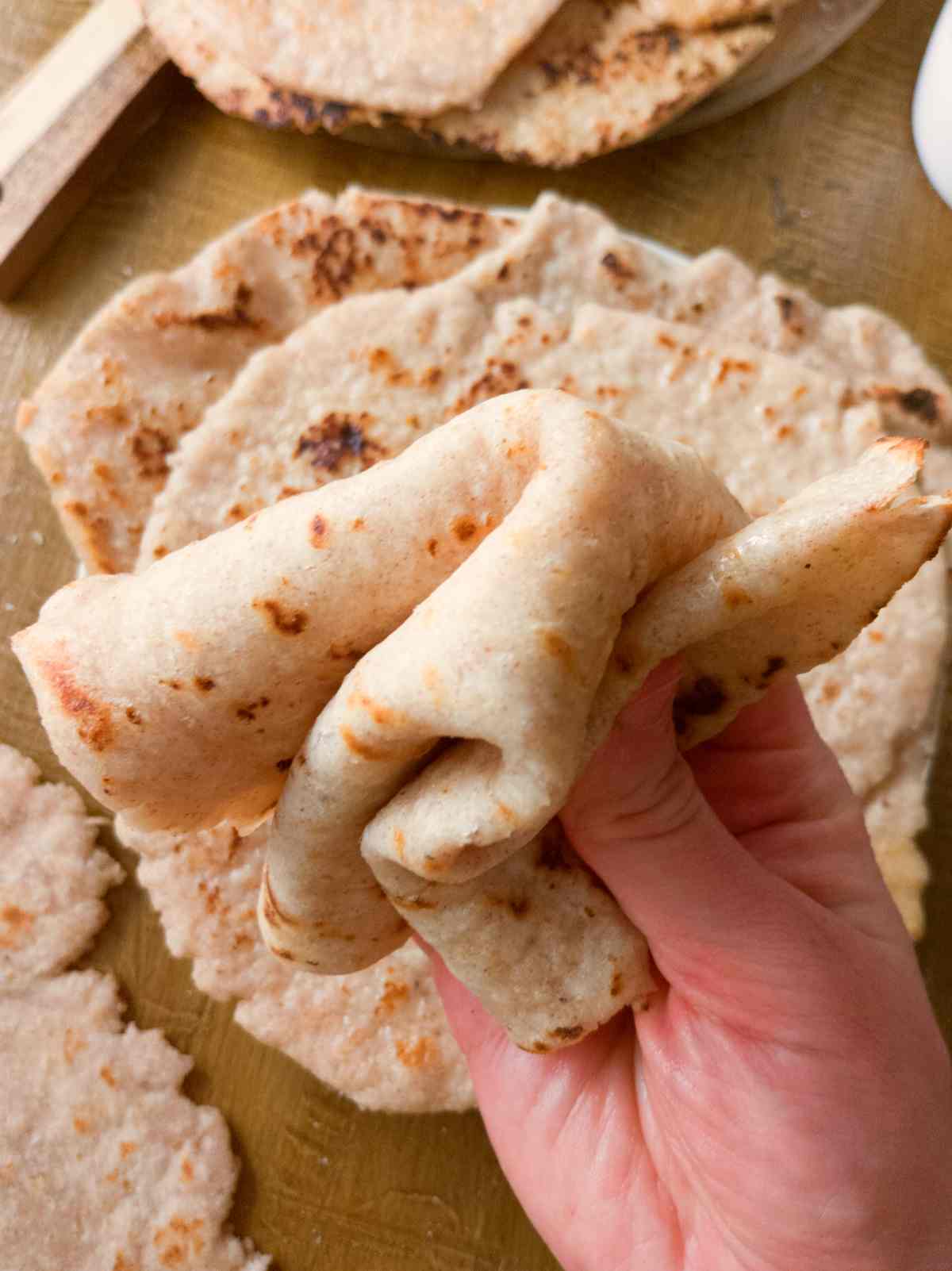
This flatbread can be used as a gluten-free pizza crust, as naan with Indian dishes, or it can be used as a wrap with meat and veggies. If you like stuffed bread, check out my gluten-free Greek pita pockets!
I also have a great recipe for gluten-free Turkish bread and Asian lavash!
Jump to:
Why You Will Love This Recipe
- Texture. The flatbread is incredibly flexible and soft!
- Simple. You can use gluten-free all-purpose flour!
- Less than 30 minutes. You can leave the dough to ferment and rise for 1-3 hours or you can fry the flatbreads right away!
Note: you might also like my GF sourdough dinner rolls and sourdough discard pretzels! For yeast and psyllium-free recipe, check out my gluten-free crepes recipe!
What Is A Sourdough Starter?
Sourdough starter is wild yeast that is used to make sourdough bread. Sourdough bread has become more popular lately because of its health benefits. I love sourdough and I regularly bake gluten-free sourdough bread with rice flour using my brown rice starter.
You can also make sourdough cookies, pancakes, pizza crust, and other recipes with a starter. Make sure to check out my gluten-free sourdough recipe collection!
New to gluten-free sourdough? Watch my 16-minute video tutorial for beginners!
Ingredients
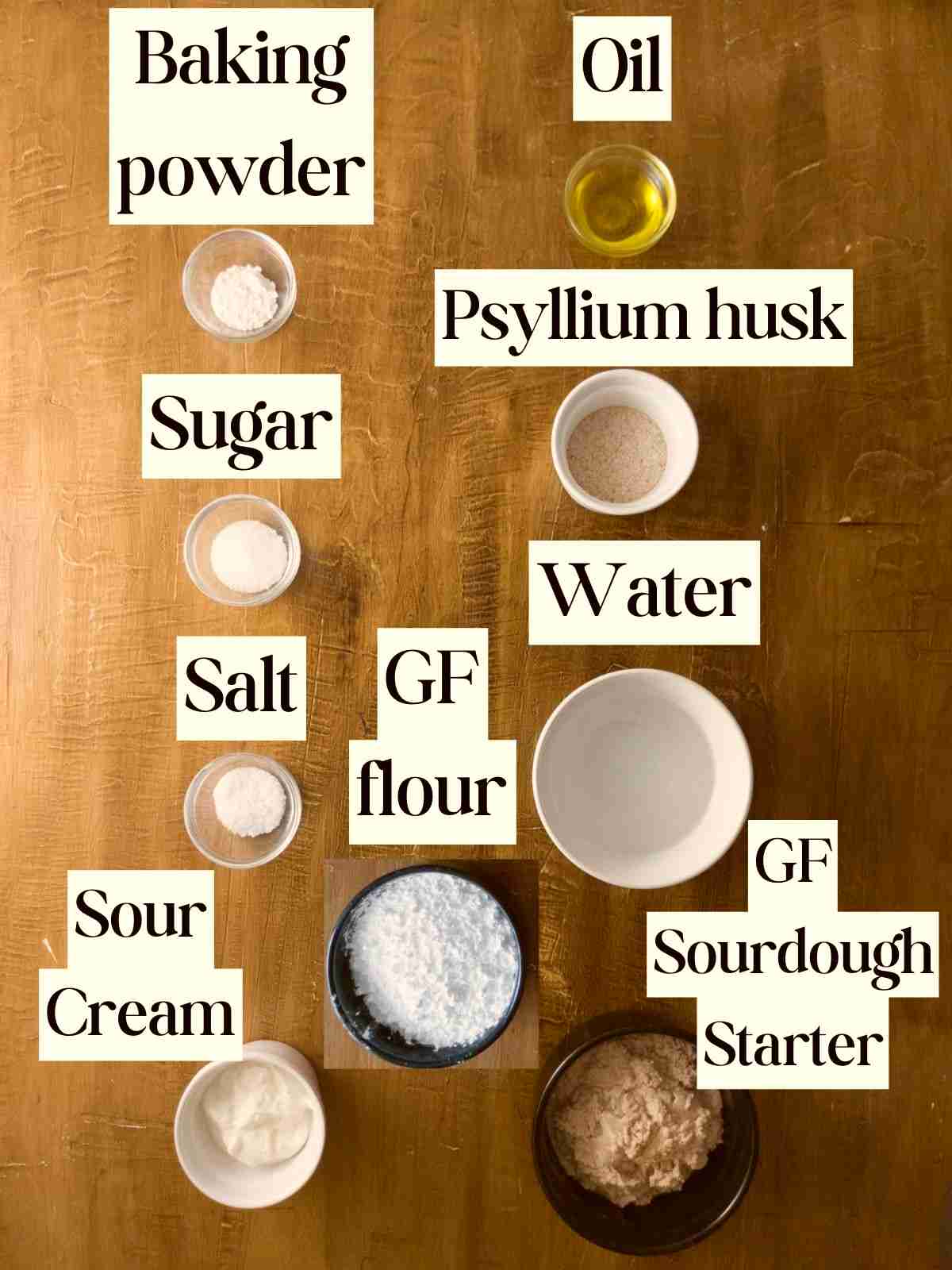
Gluten-free flour – I used my gluten-free flour blend without potato starch but this recipe will do well with any gluten-free all-purpose flour.
Sourdough starter – if you are planning to ferment the flatbreads, then use a mature starter. If you are making them right away, then an unfed discard will work, too!
Psyllium husk - I am using whole husks in this recipe but powder works great, too! There are two types of powder, one is finer than the other. You will need to use less fine powder vs. coarse grind. For more details on what they look like go to my article about psyllium husk types.
Substitutes
Sour cream - you can use Greek yogurt or plant-based yogurt.
Psyllium husk - there is no good substitute for psyllium husk other than psyllium husk powder! If using psyllium husk powder, use 85% of the amount called for in the recipe (17g) but do not decrease the water. Whisk psyllium into the water right away to prevent clumps. More details in my psyllium guide.
Sugar - you can use the same amount of honey or maple syrup.
Step-By-Step Instructions
Step 1 – Mix the ingredients
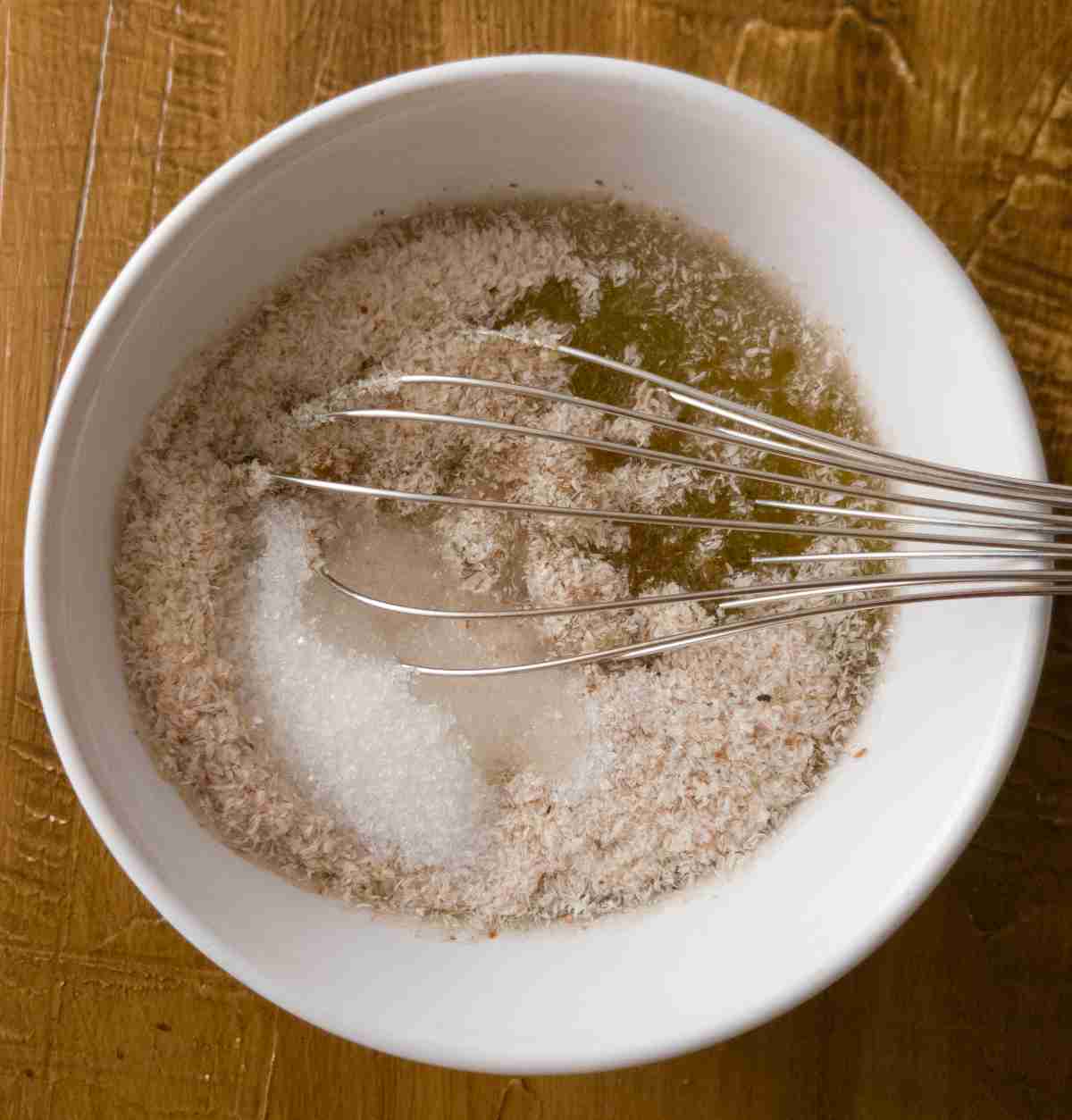
Add water, psyllium husk, oil, and sugar to a bowl and whisk to incorporate. Now, leave the mixture to form into a gel for a couple of minutes.
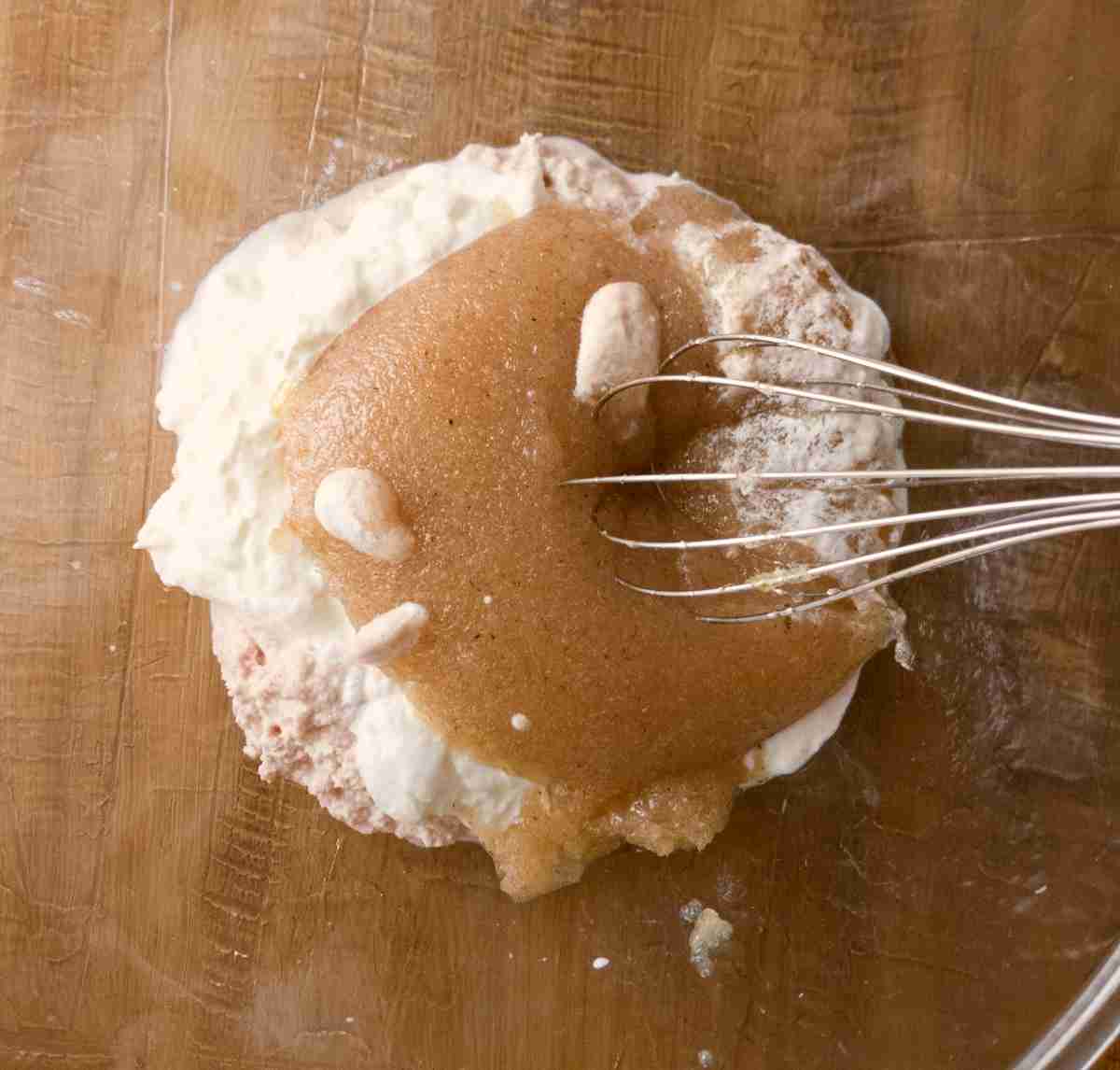
When psyllium gel is ready (it should take a couple of minutes), add the sourdough starter, sour cream, and psyllium gel to a mixing bowl and mix to incorporate.
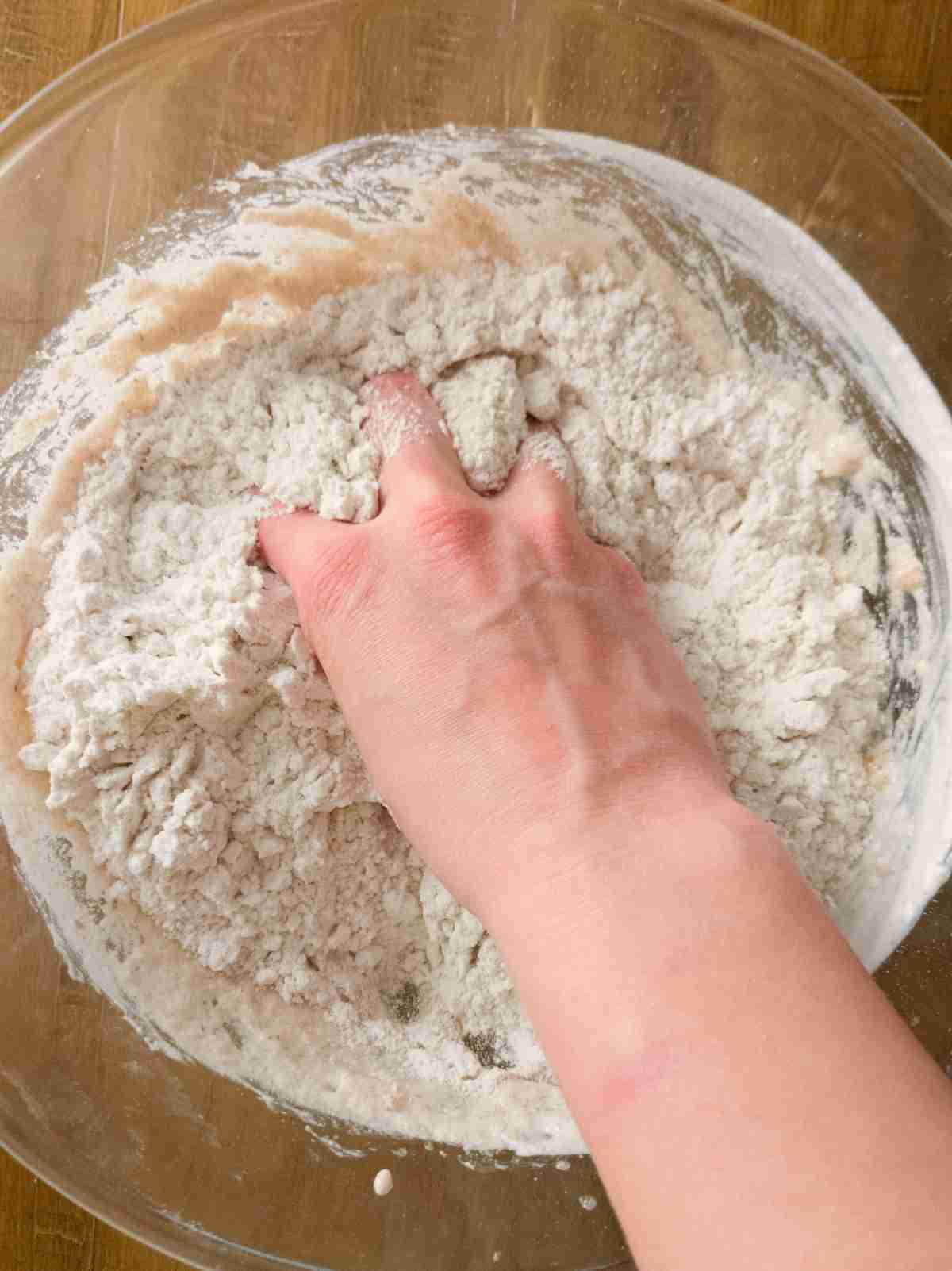
Then, add the dry ingredients and mix with your hand to combine until the dough starts separating from the walls of the bowl. Let the dough rest for about 10 minutes to settle. If you skip this step, the dough might be stickier and harder to work with!
Step 2 – Shape & Bake
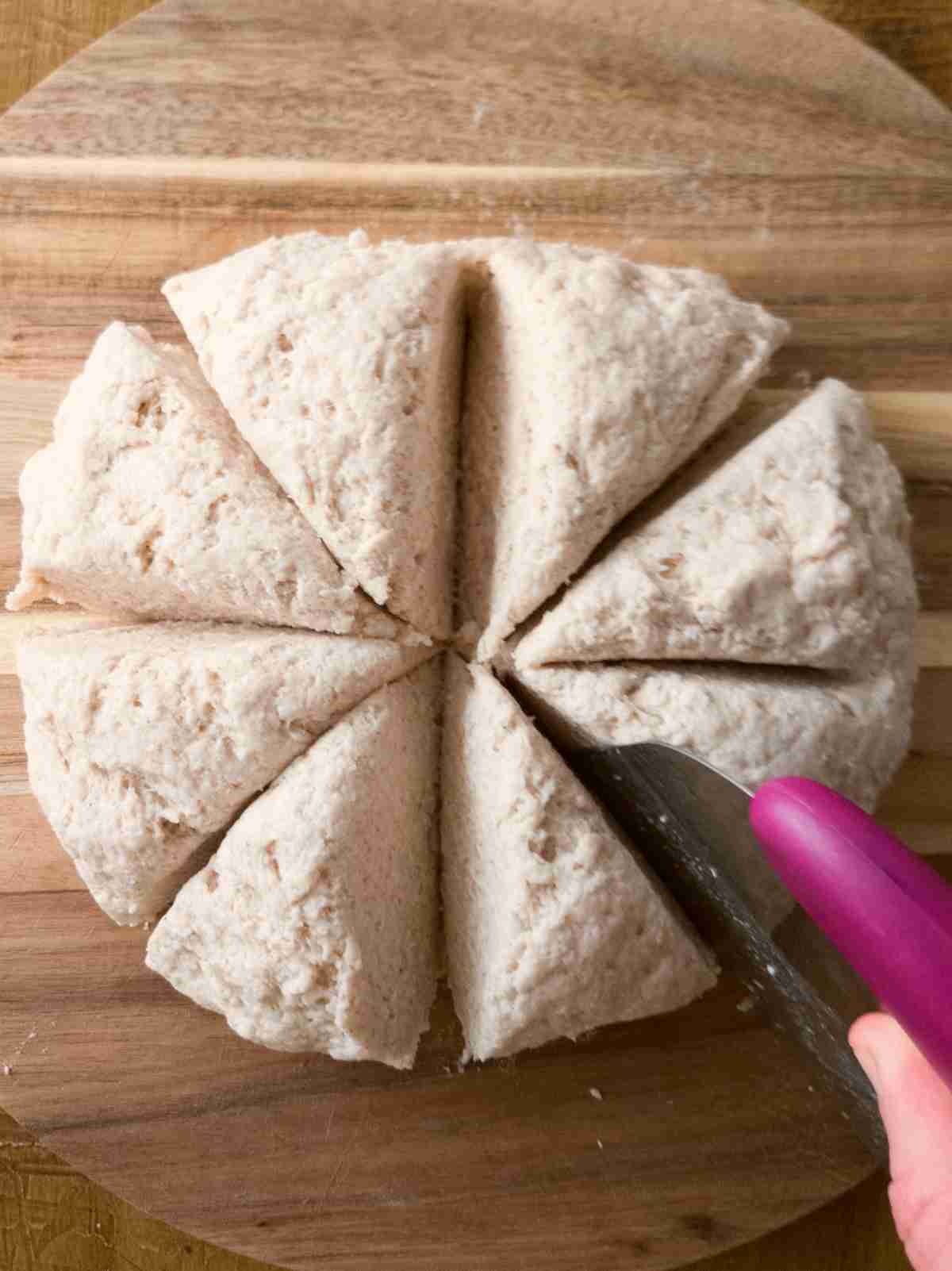
Turn the dough over onto the working surface, shape it into a ball, and separate it into 8 equal parts using a bench scraper or a knife.
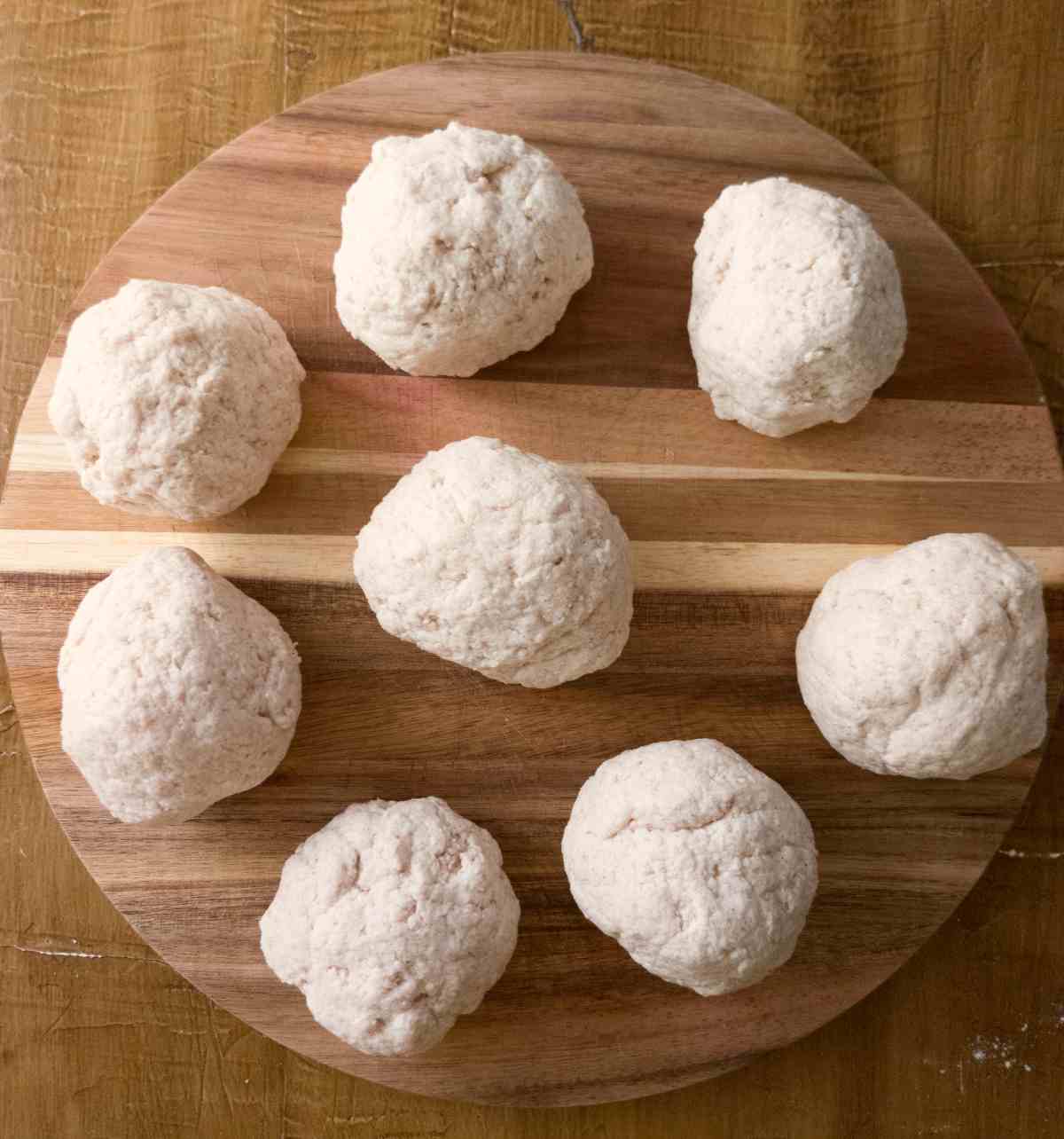
Shape each piece into a small ball. Grease your hands with oil to prevent sticking.
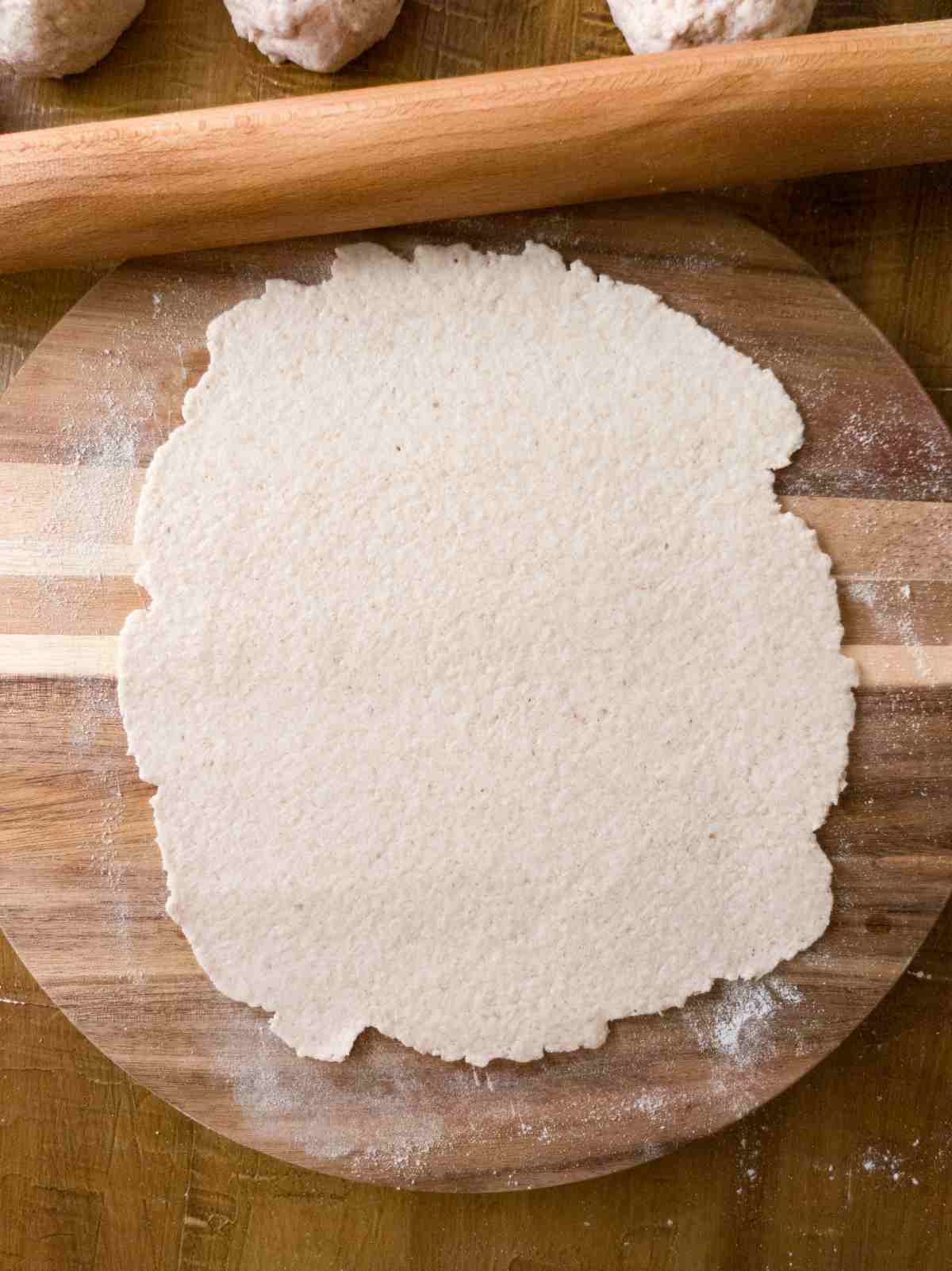
Flour the working surface and place one ball on it. Flatten the ball with your hands and spread a little bit of oil on the surface of it to prevent sticking as you are rolling out the dough. Then, carefully roll out the naan bread. Each naan should be approximately 8 inches (20cm) in diameter. Don't roll out the flatbreads too thin to avoid them breaking apart as you transfer them to the frying pan. Continue adding oil to the surface of the flatbread if it starts sticking as you roll them out!
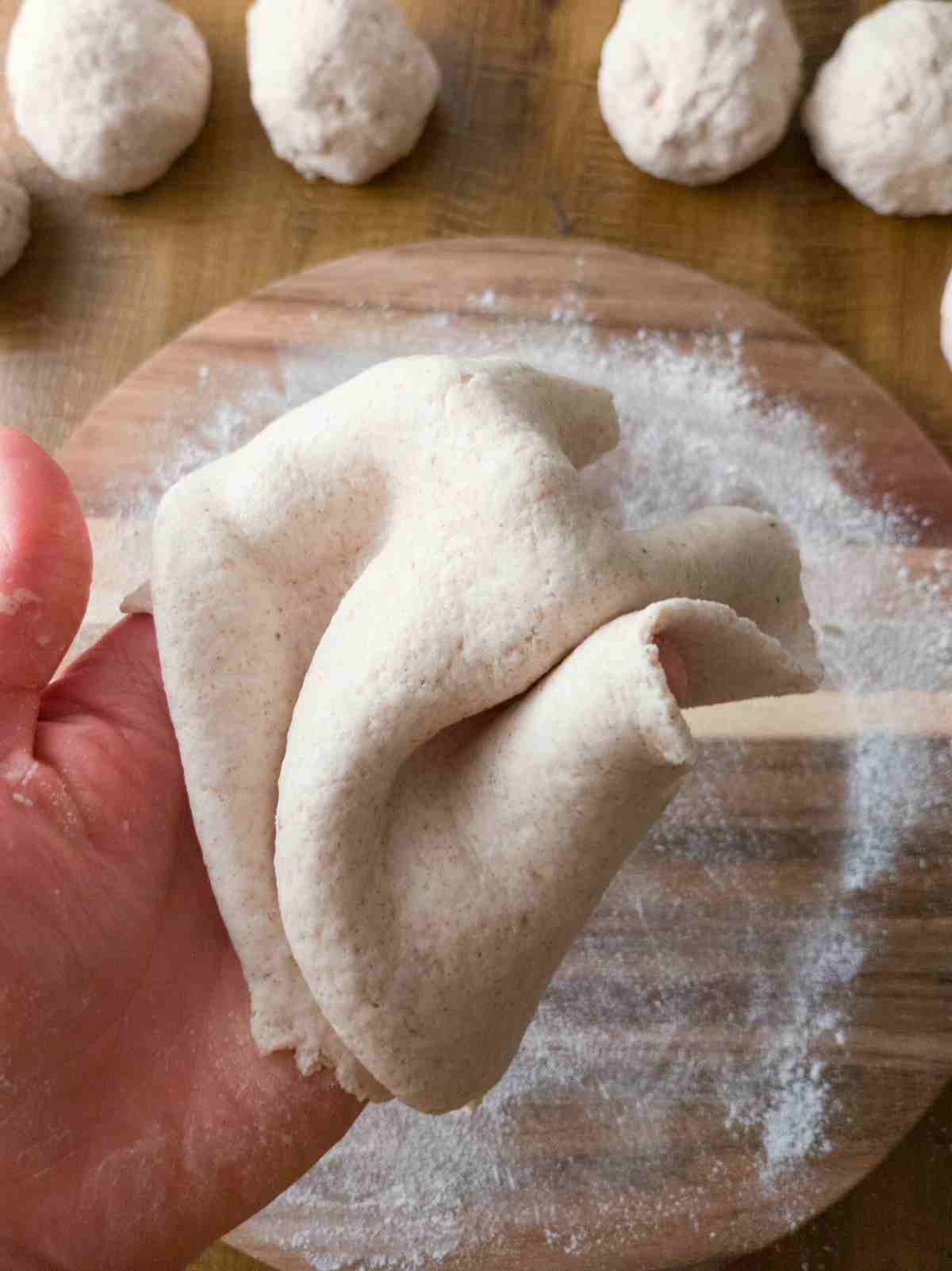
The dough will be flexible but handle it with care to avoid the flatbreads breaking apart.
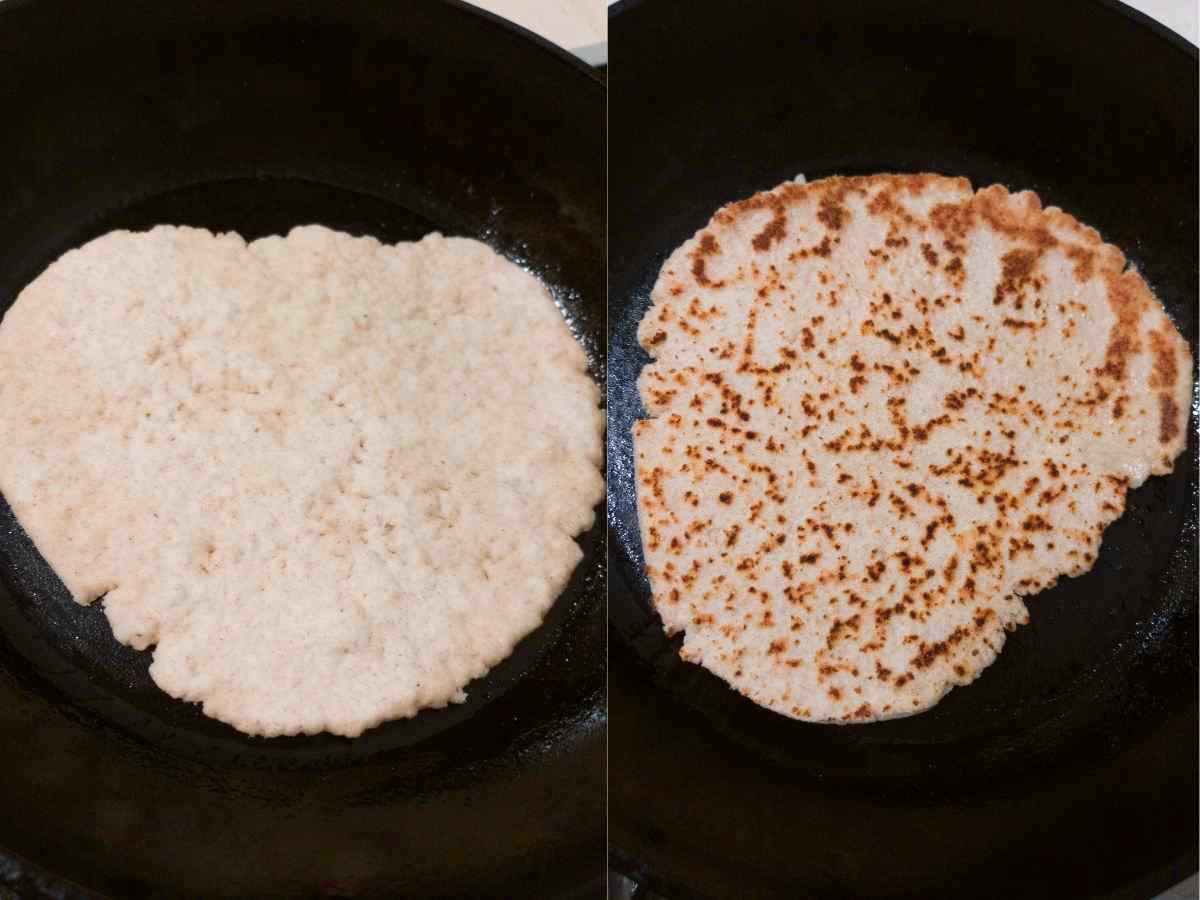
Preheat the frying pan. I prefer using cast iron but you can use a non-stick pan, too. Spread some oil onto the pan and fry each flatbread for 30-60 seconds on one side over medium heat. Keep checking to make sure the flatbreads are not burning!

Brush the flatbread with melted butter to keep them softer. Enjoy!
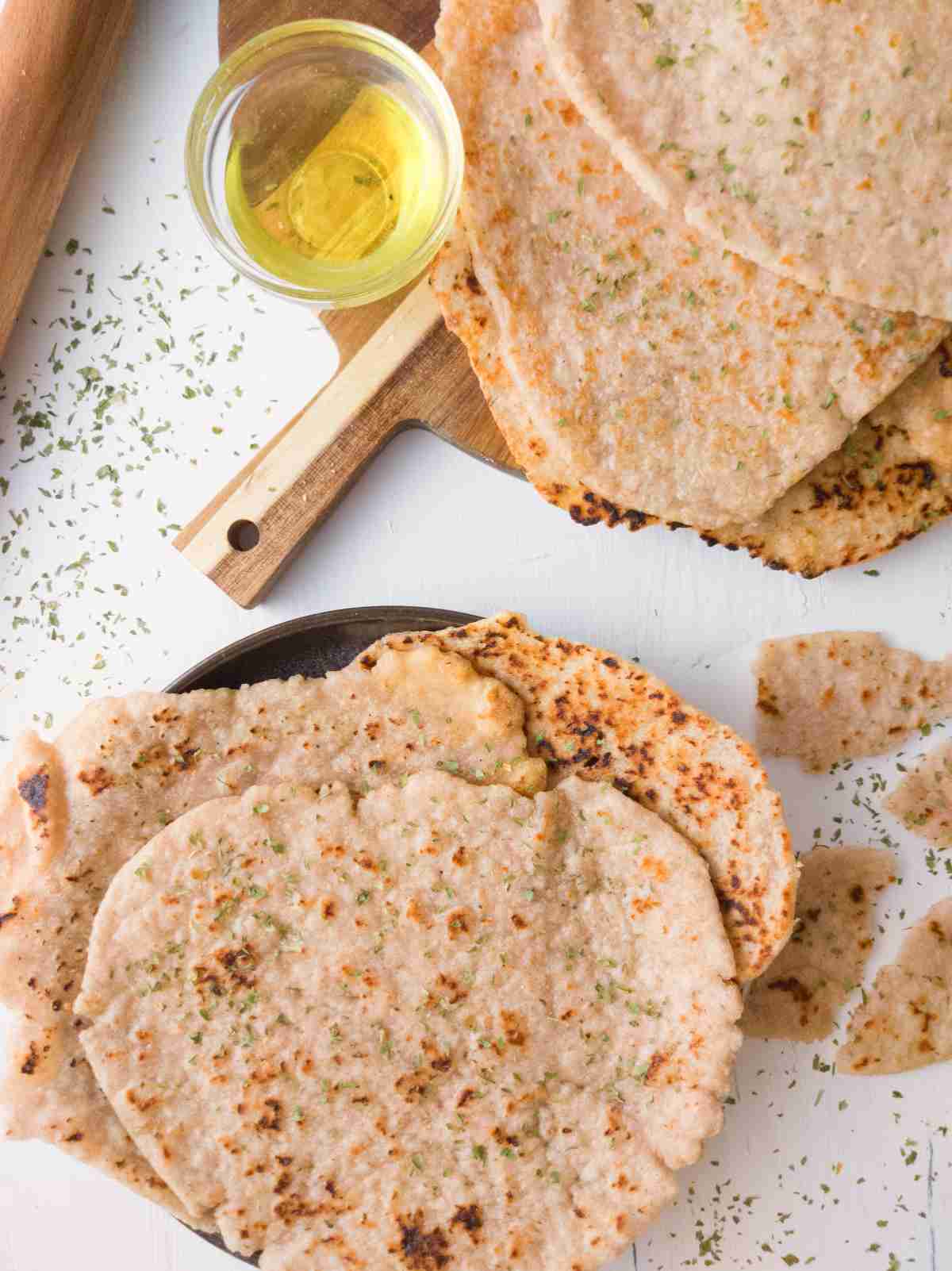
Expert Tips
- Grease the surface of the flatbread dough to prevent sticking to the rolling pin. Adding flour to the surface might make the flatbreads a bit dry. Although it is necessary to flour the working surface you are rolling the dough on!
- Grease your hands with oil when working with the dough to prevent sticking.
- These gluten-free sourdough flatbreads are high in hydration meaning they have a lot of liquids in them to ensure the best texture. If you find it hard to work with the dough decrease the water by 40g. Then flatbreads will be slightly dryer and less puffy but easier to roll out.
- Add any seasonings of choice for more flavor.
- Store your gluten-free sourdough flatbread in the refrigerator for up to 3-4 days or freeze for up to 3 months. Storing them in an air-tight bag or container will prevent the bread from drying out.
- If the flatbreads taste too sour to you, you can decrease the amount of sourdough starter by half.
FAQ
Yes! First, freeze them individually on parchment paper, then store them in a freezer bag or an airtight container for up to 3 months. To defrost place the flatbreads into a microwave for 30 seconds or bake in the oven for 5 minutes at 350F/175C.
If it is made with gluten-free flour, yes, it is gluten-free. Otherwise sourdough is not gluten-free.
Yes, place the dough into the refrigerator overnight and fry the flatbreads in the morning!
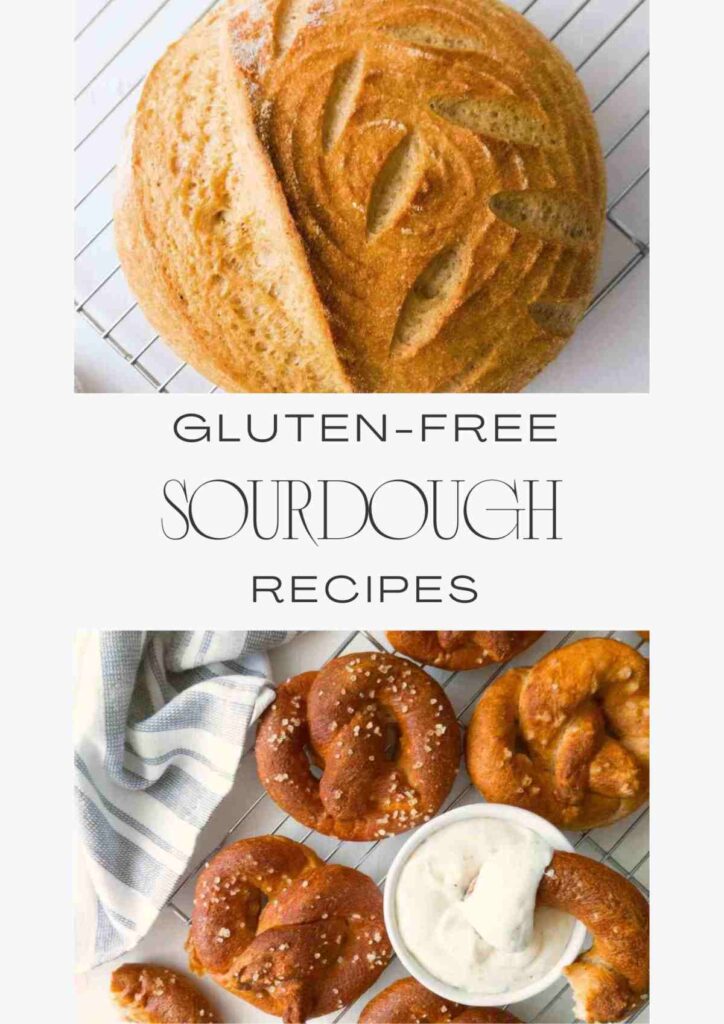
Get my GF sourdough recipes eBook
The top 16 recipes of 2024!
📖 Recipe
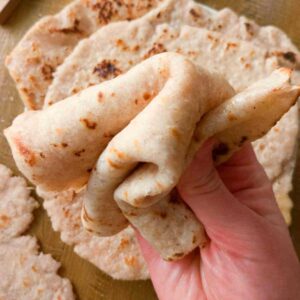
Gluten-Free Sourdough Flatbread
Equipment
- 1 medium-sized bowl
- 1 whisk
- 1 Frying pan (cast iron is the best option)
Ingredients
- 20 grams psyllium husk whole husks, 15 grams if using coarse powder, more details in my psyllium husk guide
- 310 grams (1⅓ cups) water room temperature
- 25 grams (1⅓ tbsp) oil I used olive oil but other oils work well, too
- 18 grams (1 tbsp) sugar can use maple syrup or honey
- 260 grams (1 cup) sourdough starter fed or unfed
- 100 grams (½ cup) sour cream greek yogurt works, too
- 260 grams (1⅘ cups) gluten-free flour I used my homemade potato-free flour blend which for this recipe would be: 65g brown rice flour, 65g white rice flour, and 130g starch of choice (cornstarch/tapioca/arrowroot/potato)
- 1½ teaspoon baking powder
- 10 grams (1¾ tsp) salt
Instructions
- Add water, psyllium husk, oil, and sugar to a bowl and whisk to incorporate. Now, leave the mixture to form into a gel for a couple of minutes.
- When psyllium gel is ready (it should take a couple of minutes), add the sourdough starter, sour cream, and psyllium gel to a mixing bowl and mix to incorporate.
- Then, add the dry ingredients and mix with your hand to combine until the dough starts separating from the walls of the bowl. Let the dough rest for about 10 minutes to settle. If you skip this step, the dough might be stickier and harder to work with!
- Turn the dough over onto the working surface, shape it into a ball, and separate it into 8 equal parts using a bench scraper or a knife.
- Shape each piece into a small ball. Grease your hands with oil to prevent sticking.
- Flour the working surface and place one ball on it. Flatten the ball with your hands and spread a little bit of oil on the surface of it to prevent sticking as you are rolling out the dough. Then, carefully roll out the naan bread. Each naan should be approximately 8 inches (20cm) in diameter. Don’t roll out the flatbreads too thin to avoid them breaking apart as you transfer them to the frying pan. Continue adding oil to the surface of the flatbread if it starts sticking as you roll them out!
- The dough will be flexible but handle it with care to avoid the flatbreads breaking apart.
- Preheat the frying pan. I prefer using cast iron but you can use a non-stick pan, too. Spread some oil onto the pan and fry each flatbread for 30-60 seconds on one side over medium heat. Keep checking to make sure the flatbreads are not burning!
- Brush the flatbread with melted butter to keep them softer. Enjoy!

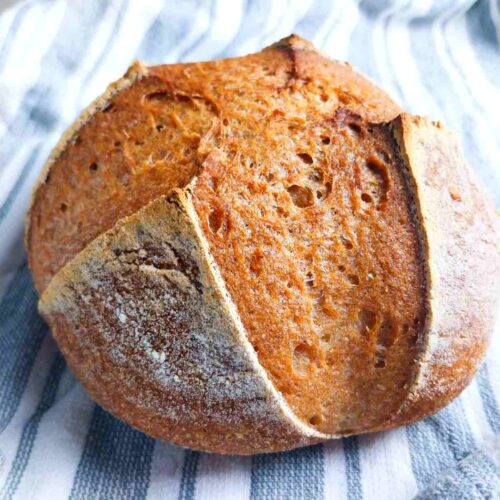
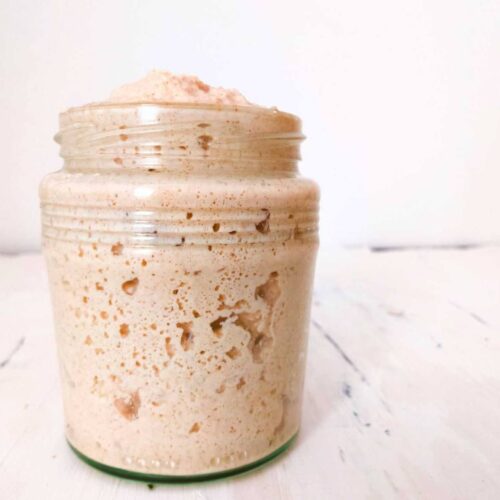
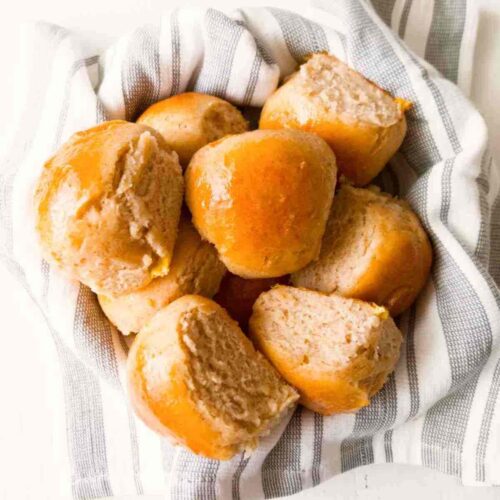
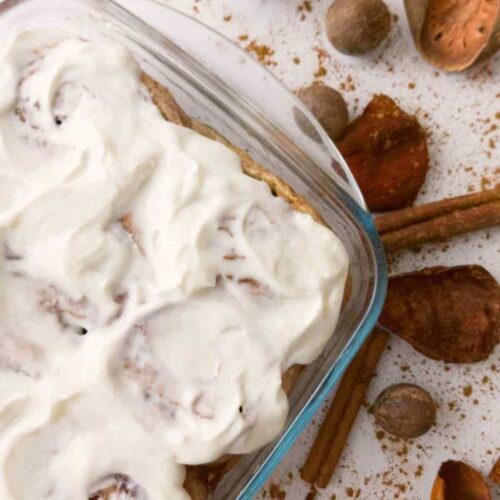
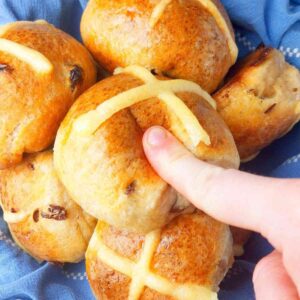
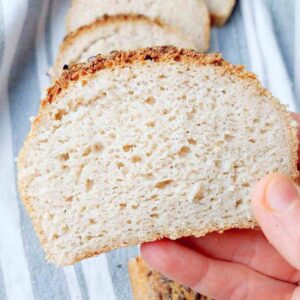
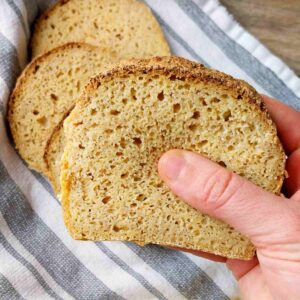
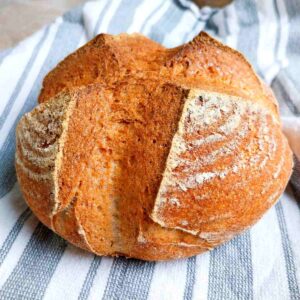
Dawn
super great 👌 thank you so much for sharing
Natashashome
Thank you for your feedback!
Penny Shephard
Just made the naan and it’s the best by far that I’ve tried! Great texture! Thank you so much!!!
Jack
This is so great thanks. Where did you get the idea from?
Natasha Levai
Hi Jack! I researched a few gluten-free flatbread recipes online and converted it to sourdough. 🙂
Deborah Mckenzie
This recipe worked perfectly! It’s the first time I’ve used my gluten free starter discard. I’m so excited, the bread is soft and delicious I can’t wait to try it with an Indian curry!
Jemima
Wow this recipe blew my tiny mind. I added garlic and rosemary, and they are incredible. I also experimented making a fold-up one with cooked mince inside and a pizza-style one with cheese and mince on top. Light, crunchy, bouncy, tasty!
Jean C
Fabulous recipe, definitely going to be my go-to. Hubby loves them and he can still eat gluten 🙂 I doubled the batch (went to a potluck) and cooked them on my griddle.
I did notice that when I clicked to double the recipe, most of the volume measurements did not change. Luckily I have switched to baking using weight measurements
Natasha Levai
Hi Jean, yes there is a little glitch with the recipe card that it doesn't always increase the ingredients. I hope they come up with some sort of solution! 🙂
Christy Browning
I would love to make this but I do not have any white rice flour. Can I substitute 1 to 1 with chickpea flour or sorghum? Do you have a better suggestion? Thank you!
Natasha Levai
Hi Christy! You can use sorghum flour instead.
Brandi
This naan turned out so good! You can't tell it's gluten free.
Kayla
While these are soft and the flavor is good they did come out slightly gummy/pancake like vs fluffy naan bread but maybe it’s because I used cornstarch.
Cheyenne
Absolutely delicious! I did half brown rice flour and half arrowroot. Fermenting for about 2 hours created perfect flavor for me. They were a bit delicate transferring from countertop to pan, so I found folding in quarters to transfer and unfolding on the pan helped a lot.
Seraya
Hi can I make this without yogurt? Or use a non dairy milk instead?
Natasha Levai
Yes, use milk instead!